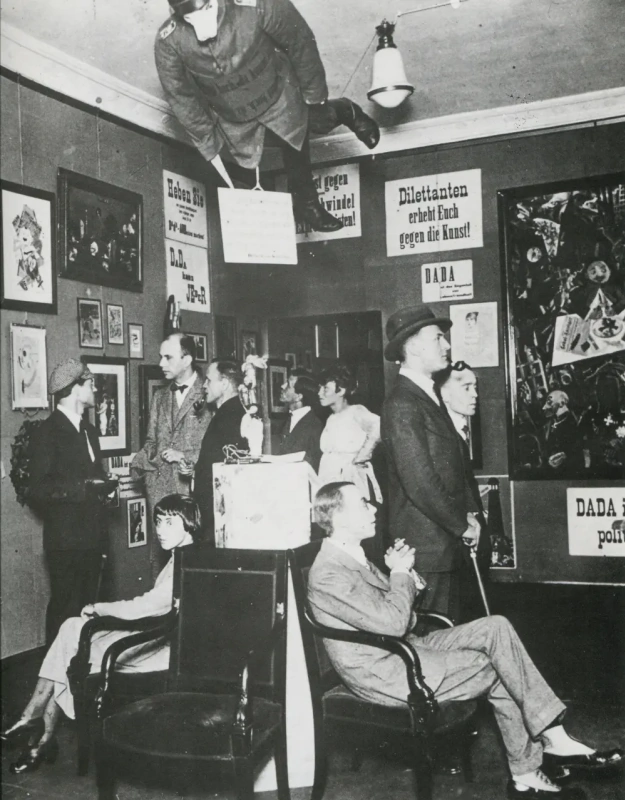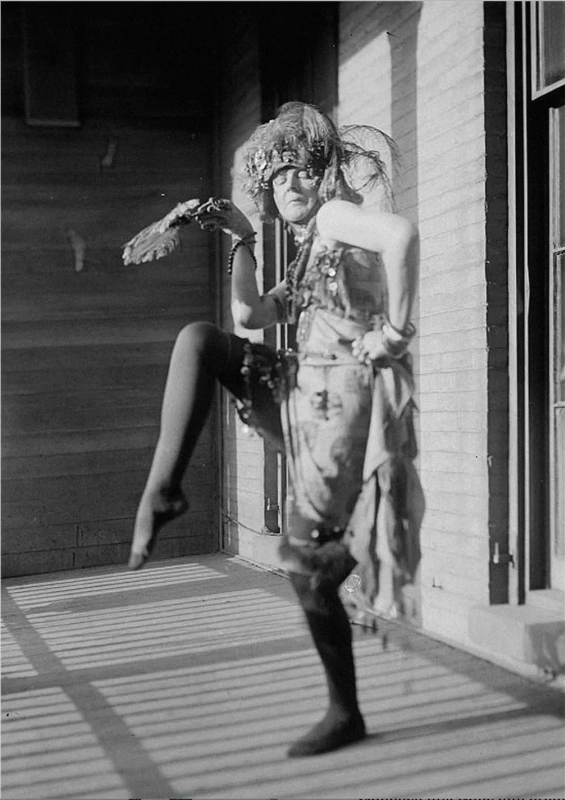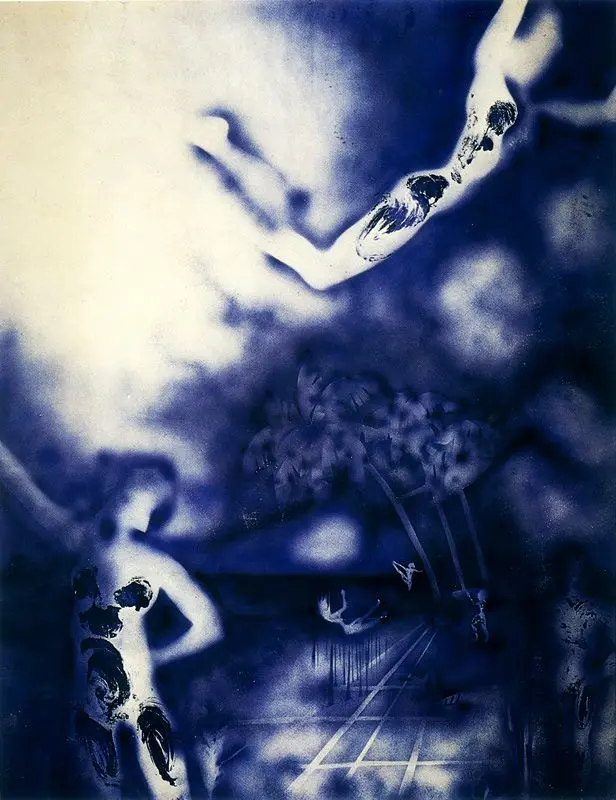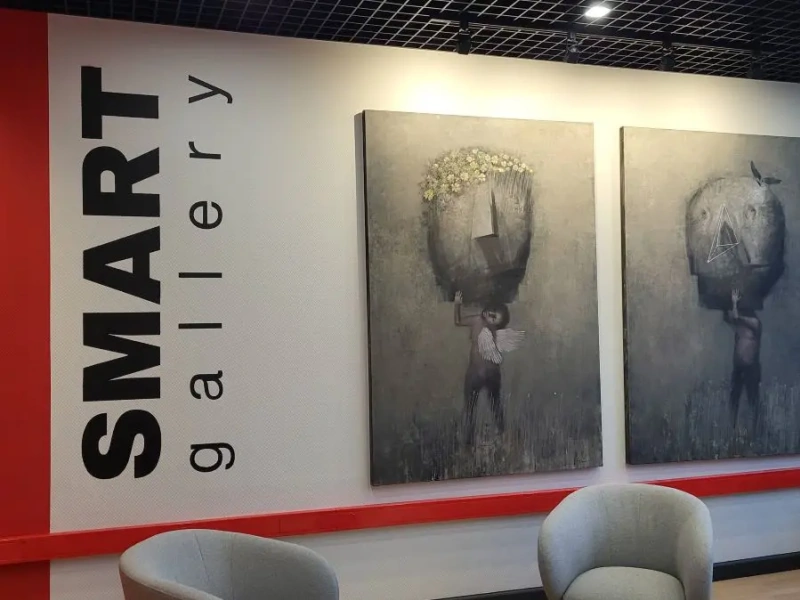Actionism (lat. actio — activity, action) was formed in the 1960s in the artistic environment of Western Europe. In search of new ways of self-realization, artists sought to turn a static exhibition into a kind of action in which they could participate themselves, and at the same time involve the viewer in a provocative dynamic process — the action.

Over time, a number of practical techniques were formed in which the artist became the subject or object of the work. Instruments of actionism are such forms of dynamic art processes as happening, performance, event, etc.
The origins of actionism: fumists and dada
The foundation of the actionism, where the creative art process dominated the result of the artist’s efforts, was laid by the Dadaists with their irrationality, cynicism and denial of canons in art. The first representatives of the movement, which arose as a reaction to the horrors and injustices of the First World War, regularly visited the Voltaire cabaret in Zurich hosted by the German poet and playwright Hugo Ball. They talked about art there, made the movement ideology, and periodically arranged performances on a small stage. "Of course, the war was supposed to end. But in the years 1916—1917, it seemed that it would never end. Hence the disgust and indignation that extended to all forms of modern civilization: its foundations, logic, language," the Dada founder, the artist Tristan Tzara recalled the beginning of the Dada movement.
It is worth noting that long before the Dadaists, something similar was practiced by the Fumists — a community of Parisian artists, poets and playwrights, who in October 1878 joined into a closed collective, the Hydropath Society. The society members regularly gathered in order to discuss and present new sketches, monologues or skits to friends, played each other and "blew smoke into eyes" of the Parisian society (fr. fuméе — smoke). They denied any prohibitions and restrictions, ridiculed everything that was dear to the bourgeois middlebrows, flavoured their jokes with a fair amount of absurdity and grotesqueness. One of the last fumists, the composer Eric Satie, became a kind of bridge between the "hydropaths" and the Dadaists when he met the young Tristan Tzara and Francis Picabia — they immediately recognized him as "their own".
The allusions and paradoxicality of surrealism, which was the French branch of Dadaism evolution, were clearly reflected in the actionist events of Salvador Dalí. No wonder he loudly proclaimed: "Surrealism is me". Dalí's outrageous public tricks were widely known and attracted the close attention of the press and the public each time. These included dinner parties, which became legends.

Salvador Dalí walking his pet anteater in Paris. 1969. Source
There is a video from a charity dinner at the Hotel Del Monte held in Monterrey in 1941. The dinner was called "A Night in a Surreal Forest", and the funds raised were intended for European actors who were out of work because of the ongoing war. The dress code introduced for the guests supposed that those invited should arrive to the reception in wonderful, exotic outfits. They were met by the hostess, sitting on the bed, and wild animals, freely walking around the banquet hall. For a snack they offered to try living frogs… Eccentricity has always been a hallmark of Dalí and Gala!
Read more about this event and the surreal cooking of the great Dalí here.
Read more about this event and the surreal cooking of the great Dalí here.
Dalí arranged the entertaining events all his life. Below is the video on the creation of the hologram of Alice Cooper, Dalí was the decorator and director. No wonder Cooper was called the "artist" of the heavy metal style. The musician preferred the shocking concert numbers, enchanting the audience not only with great songs, but also with innovative stage solutions. The real actionist!
Anyway, back to the roots. By the end of the 1920s, German Dadaism
began to transform smoothly into expressionism
, which stepped across the ocean. The American artist Jackson Pollock, who worked in abstract expressionism
, in the late 1940s began to work with the unique "drip" technique. He spread the canvas on the floor and moved around it, pouring and spraying paint with brushes and improvised items. Art historians distinguish two sub-styles in this technique — action painting, emphasizing the expressiveness of the gesture, and colourfield painting.
Pollock used different colours, whereas the artist of monochrome epatage Yves Klein was obsessed with the blue colour and he even patented his own hue — International Klein Blue (IKB). The artist used this colour in his artistic actions, in which… naked young girls played the role of "living brushes". The prints left by Klein’s blue assistants, when they pushed themselves to paper or canvas, were called anthropometrie. The audience got involved in high art, watching the naked models splash about in the paint. Girls earned no worse than strippers. Critics wrote articles. Klein lectured at the Sorbonne. Everyone was the winner.
Anthropometry 12
257×204 cm
Another well-known artist who can be attributed to the actionists is Anatoly Zverev; Pablo Picasso called him "the best Russian painter". Many of his "models" left the exciting memories of the portrait sessions. The artist always invited them with the words "Sit down, kid, I’ll immortalize you!". As Natalia Kostaki recalled, "…Zverev dipped huge brushes in buckets, sprayed fountains of paints, rubbed all this with a broom, walked on paints wearing boots. And out of all this horror, a picture suddenly appeared like the sun! At the same time, Tolya spoke through kind of proverbs, immediately composed wild, but very funny poems."
Female portrait
1978, 49×38 cm
Viennese actionists
Inspired by Munch’s German expressionism and Pollock’s creative search, the community of the Viennese actionists was somewhat isolated. Institut für Direkte Kunst (Institute of Direct Art) included such escapade masters as Günter Brus and Otto Muehl. The Institute of Direct Art gained its full force in the 1960s, mercilessly fighting the hypocrisy of the bourgeoisie. At the institute’s events, a buffet could fall out on the heads of the public, and its participants allowed themselves not only to urinate in public, but also literally crap on the Austrian flag. Later, Otto Muehl organized a large experiment in an attempt to grow a new, completely liberated person. His Actions Analytical Organization lasted until 1991, and there was time when the community numbered up to 700 people.
Performance Mom and Dad by Otto Muehl. January 1964. Photo: Otto Muehl
Günter Brus was also a radical representative of the Institute for Direct Art movement, his actions "Hand Painting", "Head Painting", "Self-Painting", "Self-Mutilation", "Blood Transfusion", "Torture" caused constant scandals. No taboos: the artist could urinate, masturbate, cut his body with blades. Like his friend Muehl, Brus was repeatedly arrested. However, the epatage cannot last forever — for the late cycle of works "Picture-Poems", in 1996, Brus was awarded the Grand Austrian State Prize.

Günter Brus with Anna Brus, Ana IV portfolio, 1964/2004. Photo: Hasak (Siegfried Klein).
© Belvedere, Vienna (Photo: Johannes Stoll). The source
© Belvedere, Vienna (Photo: Johannes Stoll). The source
In the early 1970s, the stars of the Viennese actionism began to move along other trajectories; they gave their place to a young artist, who today is called the "grandmother of the world performance". Yet in her childhood, Marina Abramović (b. 1947) realized that the process may be more important in art that the result. The first recognition — the Golden Lion of the 47th Venice Biennale — was achieved by her performance dedicated to the commemoration of those who died in Yugoslavia. For several days, 6 hours a day, Abramović washed bloody bones in front of the public. There were 1,500 bones. Sometimes during a performance she talked about Belgrade and that she never said that she was from Serbia — she came from the country that was no longer there.
One of the early significant actions by Marina Abramović, which brought her her first grey hair, was the Rhythm Zero performance in Naples in 1974. Abramović literally gave herself to the will of the crowd gathered around. She allowed them to do anything with herself by means of the 72 objects lying on the table. The public was reveling in impunity — they kicked, cut, almost shot Marina. She performed many performances with her colleague and partner Uwe Laysiepen (Ulay).

Marina Abramović during the Rhythm 0 performance, 1974. Photo: royalacademy.org.uk
Another famous performance — The Artist is Present — was first performed in 2010. Each participant had a few minutes to look into the eyes of Marina, sitting opposite. Those who look at each other get the opportunity to exchange touches to the inner world of their vis-a-vis, to silently share their emotions. The performance lasted continuously for weeks, and Marina was only allowed to sleep at night. The Artist is Present performance was repeated many times in different countries, even in Russia — the action took place at MoMA for two months.

Photo source — www.theartnewspaper.ru
Nonconformist artists were the key representatives of actionism in the countries of the former USSR — for example, Oleg Kulik alone says a lot!
The most striking representative of the trend in Kyiv, and, perhaps, throughout Ukraine was and remains the artist Feodosiy Tetianych (1942—2007) — Freepulia as he called himself. In a crimson or gold cloak and a crown cut out of "golden" paper, on heels or gilded cothurni, rattling empty cans tied to his hem, Freepulia reigned on Andriivskyi Descent. He was always seen during the celebration of Kyiv Day. He was never crazy, nor was he a laughingstock. A wandering philosopher — perhaps. Tetianych invented the word Freepulia by combining the English word "free" and "pulse, pulsebeat". Freepulia is infinity. Despite the seeming outrageousness, the "method" by Feodosiy Tetyanych has quite legitimate, strong roots in the history of art and ideas.
Nowadays, concerning the actionism in the post-Soviet territory, they discuss the activities of the Pussy Riot group. And, of course, about the actions by Pavlensky. Petersburg performance artist Pyotr Pavlensky was noted for several high-profile actions: starting with bodily practices like suturing his mouth or nailing his genitals to the paving stones of Red Square, he went on and set fire to the door of the main entrance to the FSB building on Lubyanka in 2015. After this, Pavlensky moved to France, where in October 2017 he continued his activities and set fire to the Bank of France building. A fire broke out in the heart of Paris — in the Place de la Bastille. The artist explained his actions in the manifesto "Why do we need actionism": "The more difficult the political climate in the country, the more politicized and radical are the art forms," Pyotr Pavlensky claims.

On 9 November 2015, Pyotr Pavlensky set fire to the door of the main entrance to the FSB building on Lubyanka. Photo source: varlamov.ru
Many works by actionists can be seen at the Venice Biennale. So, the winner of the 58th Venice Biennale was Lithuania with a performance opera with 13 voices Sun & Sea (Marina).

Lithuania Pavilion, performance opera Sun & Sea (Marina). Photo source: lucarossilab. it
Actionism of the museums
In order to attract attention, famous museums also began to come up with all sorts of activities. Thus, an Italian-Canadian student studying art was selected from more than 180 thousand participants in a competition organized by the Paris Louvre and the Airbnb housing sharing platform. As a reward, she got an unforgettable night in the Louvre. A similar event took place in October 2019 at the Virginia Museum of Fine Arts, as part of the Edward Hopper and the American Hotel exhibition, and the lucky winner was allowed to spend a night in a three-dimensional copy of The Western Motel painting (1965).
Photo: airbnb.com, © Julian-Abrams
The Rijksmuseum takes advantage of the fact that it can do anything with the famous Rembrandt’s painting, even set a children’s table in front of the masterpiece, as it happened in November 2017. Moreover, the museum made its long-awaited 10 millionth visitor happy with an overnight stay in the hall with Rembrandt’s masterpiece — the Night Watch painting.

Photo Rijksmuseum, nos. nl (selfie)
Actionism is deeply embedded in the practice of the contemporary art. The actions organized by artists are mostly designed to cause a loud political and public resonance and draw the viewers' attention to key problems, sometimes of a global scale. Happenings and performances attract far more public to exhibitions than the works of art presented at them. Thus, the artists enjoy the eternal love of the crowd for entertainment and show them who is what. But where is the line between the work of art and a banal public event? Of course, the final word says the viewer.
Main illustration: one of the actions by Günter Brus. Vienna Walk, 1965. BRUSEUM, Graz
Photo: Ludwig Hoffenreich, Laute Photography, Vienna. The photo source.
Photo: Ludwig Hoffenreich, Laute Photography, Vienna. The photo source.
Художники, упоминаемые в статье
Рекомендуем почитать















